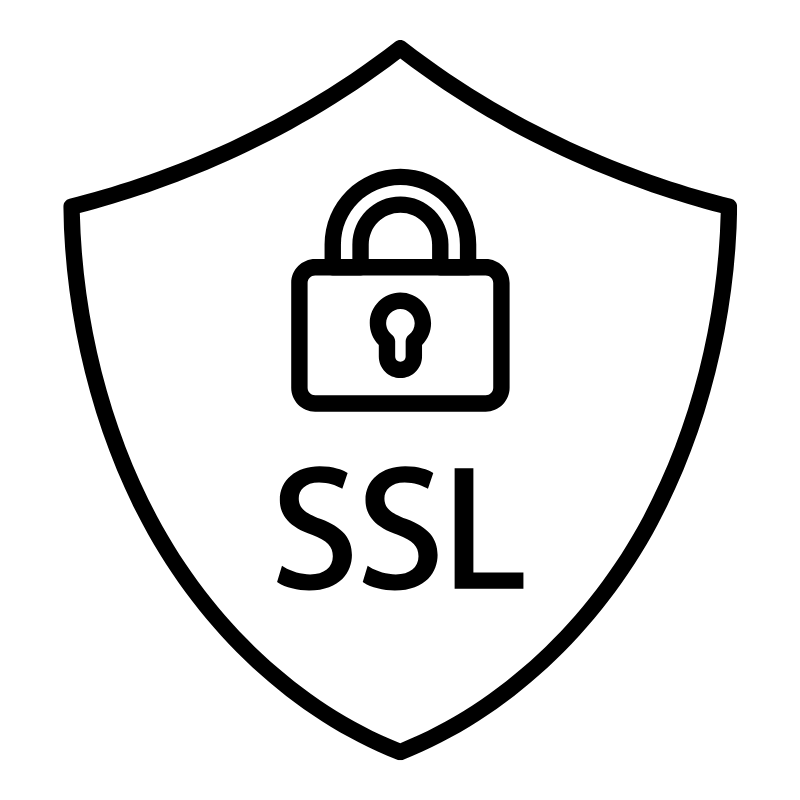DNS management is a crucial aspect of enhancing your website’s functionality, improving accessibility, and enhancing the user experience.
While DNS can effectively link domain names to IP addresses, it cannot manage itself. If you are a website owner, you need to understand DNS management to keep your site accessible, emails running smoothly, and to enhance security and website performance.
Understanding DNS management enables a smooth online presence. In this guide, we will enlighten you on the inner workings of DNS management and provide tips to ensure flawless website functionality.
Understanding the Basics: What Is DNS?
DNS interprets human-friendly internet addresses (domain names) into IP addresses that computers can comprehend.
It is the middleman between typing a domain name into your browser and the computer understanding exactly where it should take you.
Without DNS, internet users would have to use complex IP addresses, which can be hard to memorize to access websites.
How Does DNS Work?
A DNS lookup occurs when you prompt your browser to find a website by typing in a domain name, allowing your device to determine where to direct you. This is how DNS works:
- Your device performs a DNS resolver query- your device asks the DNS resolver to provide the IP address.
- Checking DNS records – If the DNS resolver does not have the IP address in its cache, it contacts the root domain servers, the Top-level domain servers, and the name servers.
- Finding and returning the IP address- after seeing the IP address, the resolver sends it back to your device, and the browser now connects to the website.
What Is DNS Management?
DNS management is the configuration, maintenance, and optimization of DNS records for a domain. DNS management’s job is to ensure:
- The correct direction of traffic to the right servers
- Enforcement of security measures
- Emails reach the right inboxes
Components Of DNS Management
DNS management involves several components, such as:
DNS Records
These records are instructions that dictate how a domain should behave. Examples:
| DNS record | Function |
| A Record | Maps the domain to IPV4 |
| AAAA Record | Maps the domain to an IPV6 address |
| CNAME record | Redirecting the domain to another |
| MX record | Redirecting email to the right mail servers |
| TXT record | Storing text-based information |
| NS record | Specification of which name servers are authoritative for the domain |
Name Servers
Name servers Act like a bridge between the domain name typed on a browser and the server where website files are stored. They are the map that guides you to the correct hosting location.
Without the name servers, you cannot access a website when you type a human-friendly address in your browser.
Nameservers are given to you by your domain registrar by default. However, if you want to have more control over your DNS settings and improve performance, you can customize the nameservers.
Time To Live (TTL)
TTL determines how long a DNS record is cached before it refreshes. While lower TTLs enhance faster updates, they increase server load.
DNSSEC (DNS Security Extensions)
DNS security extensions digitally sign DNS records, thereby preventing DNS spoofing.
DNS Propagation
This is the time it takes for global DNS changes to update. Propagation takes 24-48 hours but can sometimes take up to 72 hours.
Managing DNS Settings
Step 1: Go to DNS Dashboard
You can access your DNS dashboard by logging into your domain registrar or hosting account. Navigate your DNS settings and locate options such as name server configuration, zone editor, and DNS management.
Step 2: Add/change DNS Record
Remember the DNS record types? Choose the correct DNS record, then click add or edit the record by:
Selecting A Record from the dropdown and then filling in:
- Host: @ (for root domain) or www (for subdomain)
- Value/IP: Your server’s IP (e.g., 192.0.2.1)
- TTL: 3600 (1 hour) or lower for faster updates
When done, save the changes.
Step 3: Wait for DNS Propagation
DNS propagation can take 5 minutes to 1 hour if the TTL is low. You may have to wait 48 hours for global propagation.
You can speed up DNS propagation by lowering the TTL before making the changes or by flushing the local DNS cache.
Step 4: Verify the DNS Changes
You need to confirm whether the updates have taken effect. Examples of tools you can use to verify DNS changes include:
- WhatsMyDNS.net – to check global DNS propagation.
- MXToolbox – for verification of MX, SPF, and other records.
- DNS Checker – to test A, CNAME, and NS records.
Tips for DNS Management
These are some of the best practices you can apply to enhance smooth DNS management:
- Use a reliable DNS provider- to enhance speed and security, you need a reliable DNS provider. For example, Truehost South Africa has a client-friendly DNS management interface for easy editing.
- Lower TTL before changes- you can adjust the TTL according to the frequency of DNS record changes.
- Set up redundant name servers – you can have multiple name servers to ensure that there is always a server available to handle DNS requests in case one fails.
- Monitor performance – Monitoring DNS performance allows you to identify and troubleshoot issues.
- Back up your DNS. Backing up the DNS configuration enables prompt DNS restoration in the event of human error or system failure, thereby minimizing downtime and minimizing the impact of these issues.
- Implement security measures, such as enabling DNSSEC, to minimize the occurrence of spoofing. Additionally, utilize DDoS protection services and conduct regular and thorough DNS audits to identify any irregularities.
Common DNS Issues + Fixes
DNS issues can occur even when management is flawless. Some of the problems you might encounter during DNS management are:
Propagation Delays
This is where DNS changes can take time to update, resulting in temporary inaccessibility. In this case, consider lowering the TTL before making any changes.
Misconfigured DNS Records
It occurs when a website is not functioning due to an incorrect IP address. Misconfiguration can also happen to emails. To fix this issue, you can confirm the A, CNAME, or MX records.
Cache Poisoning
It involves redirecting users to incorrect websites, often malicious ones. Cache poisoning can cause security problems. To resolve this issue, you can enable DNSSEC and utilize secure DNS providers.
DDoS Attack
It is when DNS servers are overwhelmed by traffic. For this issue, choose a DNS provider that has an in-built DDoS protection.
Why Is DNS Management Essential?
DNS management is essential for:
Website Availability
DNS misconfiguration can result in a website’s unavailability. For example, a misconfigured CNAME can cause a subdomain to break. Additionally, an incorrect A name can result in a server not found error.
The errors can result in lost traffic, which in turn leads to lower conversions. Additionally, errors can make your website appear unprofessional, which can lead to lost business or damage to your brand’s credibility.
Email Security and Delivability
Proper DNS management ensures that emails are delivered to the right recipient. Faulty MX records can cause emails to be missing. Additionally, incorrect DNS records can result in emails being rejected as spam, which can negatively impact business operations.
Security
DNS management is crucial for preventing security attacks such as:
- DNS hijacking, where attackers redirect traffic to fake sites.
- DDoS attacks – excess traffic on DNS servers
- Cache poisoning, where fake DNS data is stored in resolvers.
Proper DNS management, such as utilizing a trusted DNS provider, can help prevent security issues.
Optimizing Performance
Optimizing DNS configurations helps reduce latency and enhances the website user experience. To maximize performance, consider using GeoDNS to minimize latency.
DNS Management In South Africa
If you are a South African business or brand, Truehost South Africa is a good option for domain registration, hosting, and DNS management. It offers:
- User-friendly domain management system
- Reliable and fast name servers
- Supports all the common DNS records
- Help customers monitor DNS propagation
- Provide clear guidelines on DNS setup and changes
- Seamless compatibility with Truehost domains and hosting
Final Thoughts
Without DNS, browsers would not be able to interpret domain names and direct traffic to the correct websites. DNS management is the backbone of the Internet. Proper DNS management ensures:
- Website accessibility – it makes sure there are no server not found errors
- Email delivery – ensures that emails reach the correct addresses and no communication is lost
- Minimizes security risks – DNS management prevents hijacking of traffic
- Performance optimization – it quickens load times for global traffic
To take control of your digital presence, you must master DNS management, including monitoring DNS changes, utilizing a reliable DNS provider, and enabling security features to ensure a seamless experience.
 Web Hosting
Web Hosting Windows HostingBuilt for Windows apps and websites – stability, speed and flexibility
Windows HostingBuilt for Windows apps and websites – stability, speed and flexibility Reseller HostingLaunch a hosting business without technical skills or expensive infrastructure
Reseller HostingLaunch a hosting business without technical skills or expensive infrastructure Affiliate ProgramRefer customers and earn commissions from sales across our platform
Affiliate ProgramRefer customers and earn commissions from sales across our platform Domain SearchFind and secure a domain name in seconds with our quick lookup tool
Domain SearchFind and secure a domain name in seconds with our quick lookup tool CO ZA Domains
CO ZA Domains All DomainsExplore domain names from over 324 TLDs globally – all in one place
All DomainsExplore domain names from over 324 TLDs globally – all in one place Free Whois Lookup Tool South Africa
Free Whois Lookup Tool South Africa VPS
VPS SSLs
SSLs